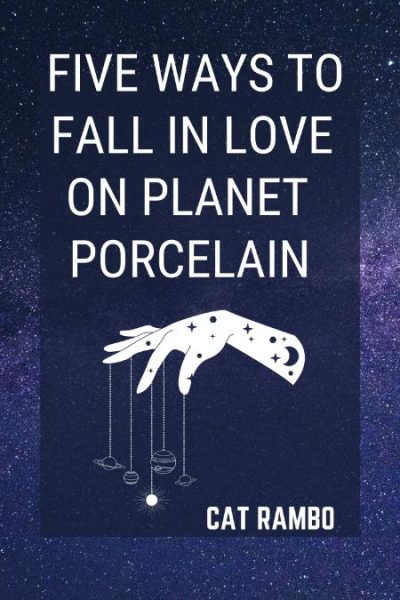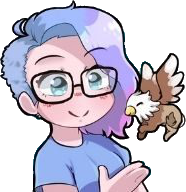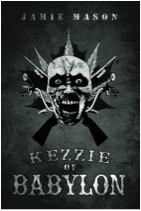Note: This originally appeared on Liz’s Patreon, which you can find here, and which I highly recommend.
Scrying the Future
The world will continue to argue the benefits, ethics, problems, and controversies about AI art and writing long past my lifetime, even if I live to be 100 years old. So I write this as a scene in media res, one drop in an ocean of ink and pixels already washing over us.
Please take it as a given that my opinions and understandings written here will also change over time, as I keep learning. And fair warning: this is a longform essay with no easy TLDR. I hope you’ll stick with me.
What the AI..?
Let’s start with some descriptive definitions. (They are personal, completely off-the-cuff, and probably wildly inaccurate by several metrics.) When I refer to “AI art” here, I am referring to the artificial intelligence deep-learning engines capable of building artistic images from human-generated natural language prompts.
In simpler English, you can ask the computer to “draw me a picture of a teddy bear kissing a unicorn,” and you’ll get one, or at least something like it.

It is likely you’ve heard of DALL-E 2 by now, or Lensa, or maybe MidJourney or Fotor, or one of the others. This teddy-bear/unicorn is from DALL-E 2 and you could find images like this on any kiddy-cutsie Hallmark card. In theory, these exact images never existed until I asked for it. If you gave the same prompt, you’d get different pictures.
Only #3 actually matches closely what I asked for. But then, my query was as simplistic as the results, and I did no selection or editing. Because I really don’t know how to use this thing yet.
I can generate images, or variations on the same theme based on one I like better than the others. For now, I’m just fine with that (for reasons I will clarify below). Other people are doing amazingly “finished” pure AI-work that I would be glad to call my own (as if I could even hope to paint such a thing).

And for heaven’s sake, Steve Colbert’s graphics team used MidJourney to create a topical take on Kevin McCarthy’s chaotic election as Speaker of the House. (Go to minute 6 if you want to see the segment in that link.) I feel certain that wasn’t a single iteration of the prompt, but one that needed to be revised to get the final image. And no, I couldn’t have painted this either.

Do I Feel Threatened?
Yes and no. It’s the wrong question, albeit the obvious one.
Do I think this changes the world? Probably. Everyone literate enough to string words together, and/or upload a photo, and have the patience to learn the interface, can bring their visions alive. That’s like the invention of the alphabet. Coupled with basic literacy, anyone can become be a poet, a bookkeeper, a storyteller, a professional liar or prophet. Anyone can hear the words of the dead, or those who never lived (but someone wished they would have). Quality will vary, but the alphabet means that it can be done.
The controversies about AI art have only just begun. Artists are being accused of making traditional art that looks like an AI did it. Others are aggrieved that the AI is sampling their painfully-acquired skills to make art that looks like theirs (but isn’t).

With these as samples, I’m not going to be out of work any time soon… not if the person making the commission wants the work to actually look like mine. Could they be refined to be more like mine? Probably.
But again — that’s not the right question about all this.
And in truth, I’m still formulating what the right questions are. This is evolving as fast, or faster, than covid’s mutations, and will continue to do so. We must get used to both realities.
What Has Gone Before
Backstory: 2-3 decades ago, a stranger learned I was an fantasy artist. “You’ll be out of a job soon. Anyone can use Photoshop on photographs to make what you do cheaper and faster, and it’ll look more real,” said he. I asserted that until one could take a snapshot of a dragon, I’d have work for the foreseeable future. But clearly he thought Photoshop would change everything.
Well… in many ways, it did. Nowadays you don’t need a photo of a dragon: a pangolin + a lizard + bat can be cobbled together and it can look damn good. A skilled Photoshop artist can produce breathtakingly beautiful, thoroughly original artworks than only an expert can see are not traditionally-created. And traditionally-created art is not sufficient in and of itself (except in limited circumstances) to make it more desirable than slick, polished, highly-finished Photoshop work. Someone in Photoshop can work faster than I can, and can make changes requested by the art director in a fraction of the time … if I even CAN make those changes at all. I am fading away into being a buggywhip maker, if you will… a perfectly good skill, hard-won, but no longer required or practical.
This is Where I Am Today
Nevertheless, I do use Photoshop as one of my tools. To date, I have never used it as my exclusive medium, but I have used it as part of many projects. For starters, I use it every time I post a picture in Patreon.
Recently, Steve Jackson’s two-sided counters were easiest done once as whole items (urns, gazebos, gazing balls) fully drawn as traditional ink drawings… and once more as their broken versions, Photoshopping in the cracks (usually drawn with ink on paper) and wiping out extraneous bits. The whole-item drawings physicially exist. The broken ones are entirely digital except for random ink lines on a separate sheet of paper that mean nothing by themselves.

The SJG flower elemental became a full color Elemental Token for an entirely different game (used with Steve’s permission). All the color work and layout was Photoshop.
Does this make me less an artist? I’d like to think not. I am simply using the tools that suit my purposes.
Here is My Present View of AI Technology…
… for myself. I see it as an interesting tool with curious potentials. I cannot speak for anyone else, artist or proto-artist, ethicist, or pearl-clutching critic decrying the fall of Western Civilization. As I am using it right now, I am using it … occasionally … as another tool, an idea-generator, and a way to jumpstart my creative brain out of lazily just doing the same-old same-old. Here are examples I’ve done in the last year. Forgive me if you’ve seen some of these here on Patreon before now.
First Use
Tasked with a 4-card set on the back of some Artist Proof cards, I was asked to do something “with underwater monsters.” Not the most detailed description, although I appreciated the latitude it gave me. But I lacked any urgent inspiration.
However, I had run into MidJourney (the one Colbert’s people used) early last year. I thought “I wonder what MidJourney thinks ‘underwater monsters’ look like?”
If I saved those first images, I can’t find them now. But I asked for “underwater monsters” and — like the images above — got a lot of silliness. But one I really liked was an asymmetrical critter with multiple orange eyes and long kelpy toes. I used other art references as well, like photos I’d taken from the Atlanta Aquarium. I referenced a book cover of 20,000 Leagues Beneath the Sea, for its depiction of sun beams coming into deep water.
I made this:

I don’t think it would ever have occurred to me, on my own, to make that critter with the orange eyes. The MidJourney prompt jolted my brain, and I ran with it. Inspiration came from many places for this piece, which is sometimes given as the very description of creativity, after all: to take things that were not linked before, and to put them together.
And there’s the rub. That’s precisely what the AI engines are doing, assembling images out of the “inspiration” derived from its knowledge of however-many-kajillion examples of art loaded onto the internet.
We will be having conversations about the ways that is and is not different for… a very long time.
Let’s Have Another Example
Another card-art commission asked me to revisit the shaman-seer from the “Portent” Magic card. The client asked him to be peering into a crystal ball, something like a palantir (the “gazing balls” used by Sauron and Saruman, if you will). Below you can see the original card, and the final result.

The original card art could be considered “derivative” in many ways, or simply full of creative recombination with iconography of many and varied ancient cultures. (I often jest that I didn’t want to steal any one people’s patrimony so I took from all of them… at least, all that I could fit into the vision.)
For the original shaman, I wanted to harken back to the sepia-tone photographs of indigenous North American people taken by Edward Curtis in late 1800’s and early 1900’s. For the commission, I wanted something a bit like Curtis again but different, while still including recognizable features of the earlier card image.
In this case, I turned to DALL-E and fed it this prompt: “a very elderly blind indigenous man who is a seer, peering into a crystal ball like a palantir. There are bird images in the picture, and items of copper and turquoise.” This is what DALL-E offered me:

Most are terrible but I kinda liked the far one. You can see the elements I picked up: the man faces full-front, his raised hand obscures one eye with the little finger tucked up just so, and there is “stuff” on the table.
I had to fix his hand. (Why DALL-E thinks all these seers should have only three fingers is curious to me). I brought in a large separate globe because the black marble was completely unsatisfactory. His visible eye wasn’t cataract-blind; I made it so. I added more elements from the card painting: his copper-and-bluestone headpiece, the feathered “wings” to each side (abstracted), his nose ring, his braids wrapped with copper end-beads.
I was and am quite pleased with the final result, as is the client. Should we be? I feel like DALL-E pointed me to an idea that I morphed to suit myself. In what ways is that different from the art director’s inch-thick file of written descriptions and existing drawings/paintings I had to refer to (and match stylistically) when making one of my last Magic cards? Staff, land, costumes all had to match exactly.

Last Example
This client asked me to revisit “Zur’s Weirding,” one of my stranger Magic cards, onto a four-card set of artist proofs. Our email conversation poked at a number of options and suggestions, batted back and forth.
In the end, I would make one picture with three iterations of Zur rockin’ the three colors of the card’s mechanics in shapes to suggest the typical representations seen in those colors: Zur as a blue mage, as a black lich-ghoul-zombie, and as a white priest-cleric. We also wanted to pick up on Pete Venters’ depiction of him as the supercrazy “Zur the Enchanter” — which I felt fine doing because I’d spoken to Pete about it, and knew he was trying to echo my depiction in his own work while also making it his own. I knew he wouldn’t mind if I returned the favor.
Here’s my original card image, and Pete’s when used on a playmat:

The commission had a lot of elements to include, and that was good. However, I was afraid of making the three-man pose too conventional. I decided to ask DALL-E if there was an interesting way to position three figures on the page, and gave it the prompt “Three men standing together: a cleric, a magician, and a lich. Fantasy setting, photorealistic, moody lighting.”

Again, the results were not to spec, but I liked bits of the second one: the paunch on the fellow on the left, and his big book… the upraised hand on the fellow on the right, and the way his cloak fell. The backlighting.
Here is the final result.

What was perhaps less intentional is that I’d just watched Netflix’s The Sandman. So Magician Zur has something of Morpheus’ hair, and the cleric is black because I’d been primed by the show to think in more than one skin color. Oh: and the ruby.
Inspiration, Influence, and Plagarism
Inspiration comes from everywhere. In none of the AI-adjacent pieces did I copy the prompts directly. I used them the same way I use photographs, or a cloudshape I saw the evening before, or the color scheme of a book with an entirely different cover than the art I was working on. Showing you these pieces with their elements exposed feels almost as deadly as a stage magician showing you how their tricks are done. I hope you won’t think the less of me for it…
…because I feel strongly that copying and plagarism are real, and to be assiduously avoided. If you can spot what was taken from elsewhere, whole and entire, plonked down in the middle of one’s “new” work? That’s a problem. Copyright law today is badly flawed, but it exists for good reasons, and fair use confuses many. (This video is priceless but will make you twitch as you learn.)
Are these things — plagarism and copying — just the evil end of a sliding scale? At the other end is… what? Creative output 100% uninfluenced by anything that has come before?
I doubt it exists. I recall a science fiction story (whose title or author I cannot recall for the life of me), dating from my childhood. Scientists experiment with a musically creative child raised in isolation, exposed to absolutely no existing music whatsoever so they might find out what “pure” musical creativity truly was. The kid was outed after he got hold of a Bach fugue, and (thus inspired by a novelty he hadn’t invented independently) began incorporating fugues into his music. To the researcher, his purity was “spoiled,” the experiment ruined.
I learned to ink copying Aubrey Beardsley and Alphonse Mucha; my linework still has an Art Nouveau flavor to it. My designs and preferred poses often carry that sensuousness and framing; the way I create costume and drape cloth shows it. There were a plethora of other influences, but that’s one thick taproot.
If influence is plagarism, no artist can escape it. We learn to see, to think, to admire, to depict, to emulate, to pose, to paint, to draw by looking at the world and all — ALL — it has to offer our eyes and our imagination. And we put it together in new ways the same as writers make new stories and even new words using the various alphabets of the world, ancient and modern, even as they are retreading old words again and again.
So perhaps, in part, it is just a question of including enough different bits from enough different places, consciously or unconsciously: Only be sure always to call it please “research.” (Cue Tom Lehrer’s Lobachevsky.)
Just my drop of pixel-ink in the ocean of conversation we can and will surely have about this topic for many years to come. I am skipping over many related topics. I come away with more questions than answers. And I am okay with that.
— Liz
CREDITS: Jason M. Allen’s “Théâtre D’opéra Spatial” image taken from https://www.cnn.com/2022/09/03/tech/ai-art-fair-winner-controversy/index.html
If you’re an author or other fantasy and science fiction creative, and want to do a guest blog post, please check out the guest blog post guidelines. Or if you’re looking for community from other F&SF writers, check out the Rambo Academy for Wayward Writers’ virtual campus, with classes, weekly Zoom events, and a critique group.!













